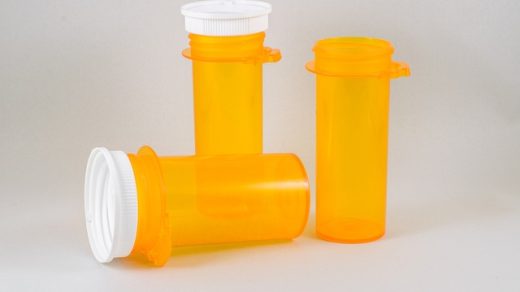The dental-jaw system is an important system for most animals, and teeth are not only a foraging tool but also a weapon of attack and self-defense. As far as bidentate mammals are concerned, damage to the dental organs often means the loss of viability. In the process of human evolution, the ability to manufacture and use tools, and changes in the structure of food have reduced the importance of the dental-jaw system. As a result, the jawbone gradually shrunk, and the teeth also underwent changes in volume and number. However, the degeneration of the jaw and the degeneration of the teeth are not synchronized, and the disorder of the dentition system characterized by crowded dentition and malocclusion has become a disease unique to human species, and the human dentition has also become a susceptible to caries. , periodontal disease and trauma and other causes of damage to the organs.
From tooth loss to dentition loss, and then to dentition loss. The dental-jaw system starts from disorder and develops to a complete collapse, which has become an unwilling but unavoidable reality in the course of life. The dentition is the most vulnerable organ in the human body. Data shows that as early as thousands of years ago, human beings tried to use various natural materials to repair missing teeth. There is no doubt that prosthodontics is a discipline with a very long history.
What is prosthodontics? What is the nature or purpose of prosthodontics?
The health of the dental-jaw system is manifested by the structural and functional integrity of the system, which is based on the harmony and stability of the system. The maintenance of health is to maintain the harmony and stability of the system.
Modern oral medical technology maintains the harmony and stability of the dental system from three levels.
The first is the level of preventive medicine: education about oral health knowledge of the people, and the cultivation of good oral hygiene habits (healthy diet, correct brushing of teeth, medical treatment, etc.). Orthodontic treatment has proven to be an extremely effective and important technique. It intervenes at a certain stage in the development of the teeth and jaws to adjust a disordered and unstable dental system into a well-ordered and harmonious system to resist caries. , the ability of periodontal disease and occlusal trauma is greatly improved. The reduction of dental patients in developed countries such as Europe and the United States fully demonstrates the effectiveness of preventive medicine measures.
The second is the level of therapeutic medicine: the treatment of caries, endodontics, periodontal disease and trauma, the purpose of which is to preserve the structural integrity of the dental system as much as possible.
The third level is restorative medicine: once the tissues and organs of the dental and jaw system are damaged and missing, the body cannot repair and regenerate itself. The use of artificial devices made of biomaterials to repair and replace defective and missing tissues and organs is the technology of prosthetics. Oral restoration is to continue to maintain the relative stability of the dental system in stages by restoring the structural integrity of the dental system and restoring a certain degree of function.
It is not enough to only understand the purpose of oral restoration as the restoration of the structure and function of the missing part of the dental and jaw system, because artificial restorations are essentially different from natural teeth, and most restorations cannot be truly replaced and realized at present. The structure and function of natural teeth (with the possible exception of implant dentures), and therefore seem to be unable to truly restore the structure and function of the original system. So why does a good repair sometimes make the patient feel almost functionally free and use it for a long time? The reason is that we consciously (or unconsciously) reintegrate and utilize the resources of the system from the perspective of system repair.
For example, the periodontal reserve of the abutment is an important resource for the functional support of the restoration. When using implant denture technology, the bone mass in the edentulous area is an extremely valuable resource. When resources are integrated and utilized, they can often be more effective than individual resources. For example, the principle of periodontal splint plays an important role in the restoration of fixed bridge dentures, telescopic dentures and attachment dentures.
Another reason is that although the dental system we are restoring may be very different from the original system, it is a stable state under the new conditions. On the contrary, if the remaining resources of the dental system are not used correctly and a harmonious and stable state cannot be established, the restoration will be difficult to obtain a long service life, and even become a “bad restoration” to damage the system resources and accelerate the development of the dental system. collapse.
With the ideology of system restoration, we will understand that the goal of restoration technology improvement and development is not to pursue the “long-lasting life” of the restoration itself, but to enhance the ability to maintain the stability of the dental and jaw system. In order to maintain the stability of the dental-jaw system, it is necessary and reasonable to repair or even replace the prosthesis for a certain period of time under appropriate economical and feasible conditions. The longevity of the restoration is only of value and significance if it is linked to the stability of the dental system.
Although in clinical practice both Chinese medicine and patients will actively strive to find a “best” restoration plan, theoretically, any prosthodontic technique cannot solve the problem of the dental and jaw system once and for all. When the stable conditions of the dental system at a certain stage are lost and the system is damaged, we are faced with the problem of restoration under new conditions (usually more difficult), and the remaining resources of the system are less and more valuable, for example, in certain circumstances Next, we need to consider changing the way the abutment is stressed, design the over denture restoration, pay more attention to the protection and utilization of the residual crown, residual root and the remaining alveolar bone, and adjust the function to establish a new harmony and stability.
Hi! Thanks for visiting my profile. I am tony xu from an yang, China, works on Dental Laboratorio, which is a professional online dental supply store. I am a passionate person who’s focused on oral hygiene post writing.


